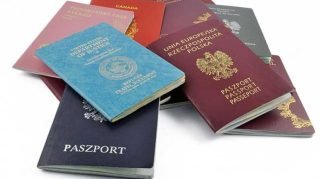People who were born in the US yet trace their lineage back to New Zealand are sometimes referred to as New Zealand Americans or Kiwi-Americans. Surveys conducted in 2010 revealed that there are around 20,000 people of New Zealand descent now residing in the United States. Since the 1940s, the majority of New Zealanders who have migrated to the United States came in search of better educational opportunities or career opportunities, particularly in fields connected to banking, import and export, and the entertainment sectors.
One has to be in possession of a Green Card in order to be considered a lawful permanent resident of the United States.
The majority of people who move to the United States do so for one of three reasons: they have a job offer, a family member who is a citizen of the United States, or they are an immediate relative of a citizen. The third option is particularly frequent among Irish immigrants.
Worker Programs
Immigrants to the United States typically do so out of a desire to pursue better economic opportunities. Employment in the United States is the path that will most likely lead to the acquisition of a Green Card. The EB-1 and EB-2 visas are examples of immigrant work visas, and they suggest that a Green Card will be issued shortly after entering into the country. The H-1B, L-1, O-1, E-1, and TN visas are examples of non-immigrant work visas, which are transitory in nature.
An immigrant who initially enters the United States on a non-immigrant work visa but later decides that they want to remain in the country permanently may alter their status and submit an application for an immigrant work visa while they are already in the country. Talking to an immigration specialist is another excellent way to figure out if an individual is eligible, as well as which visa is the best fit for that person.
Sponsorship Within the Family
A significant number of individuals who are not citizens of the United States who yet are able to acquire lawful permanent residence in the United States do so as immediate relatives of US citizens or because they are eligible for other family-based considerations. Because the methods for applying for each of these visas, Immediate Relative & Family Preference, are different, it is essential to establish which one is the most appropriate for the specific circumstances of each individual’s situation. When trying to determine one’s eligibility, it could be beneficial to consult with an immigration specialist.
Student Visa USA
The United States of America is well recognised for having some of the world’s finest educational institutions, particularly universities. Because of this, each year a significant number of students from other countries submit applications to study in the United States. You will require either the F-1 or the M-1 student visa in order to enrol in an overseas educational programme on a full-time basis. Each of these student visas is a nonimmigrant visa that, assuming certain conditions are met, will allow you to pursue academic pursuits in the United States.
Eligibility Requirements for Student Visas
Be enrolled as a full-time student in an educational programme that can be classified as “academic,” as well as a language training programme or a vocational programme.
You must first get admission to a school that has been recognised as legitimate by the Student and Exchange Visitor Program of Immigration and Customs Enforcement.
You must either be fluent in English or engaged in lessons that will get you to that level of English fluency.
Ensure that you will have enough money to support yourself for the entirety of the proposed academic programme.
Keep a domicile in another country and have no plans to move out of that country.









